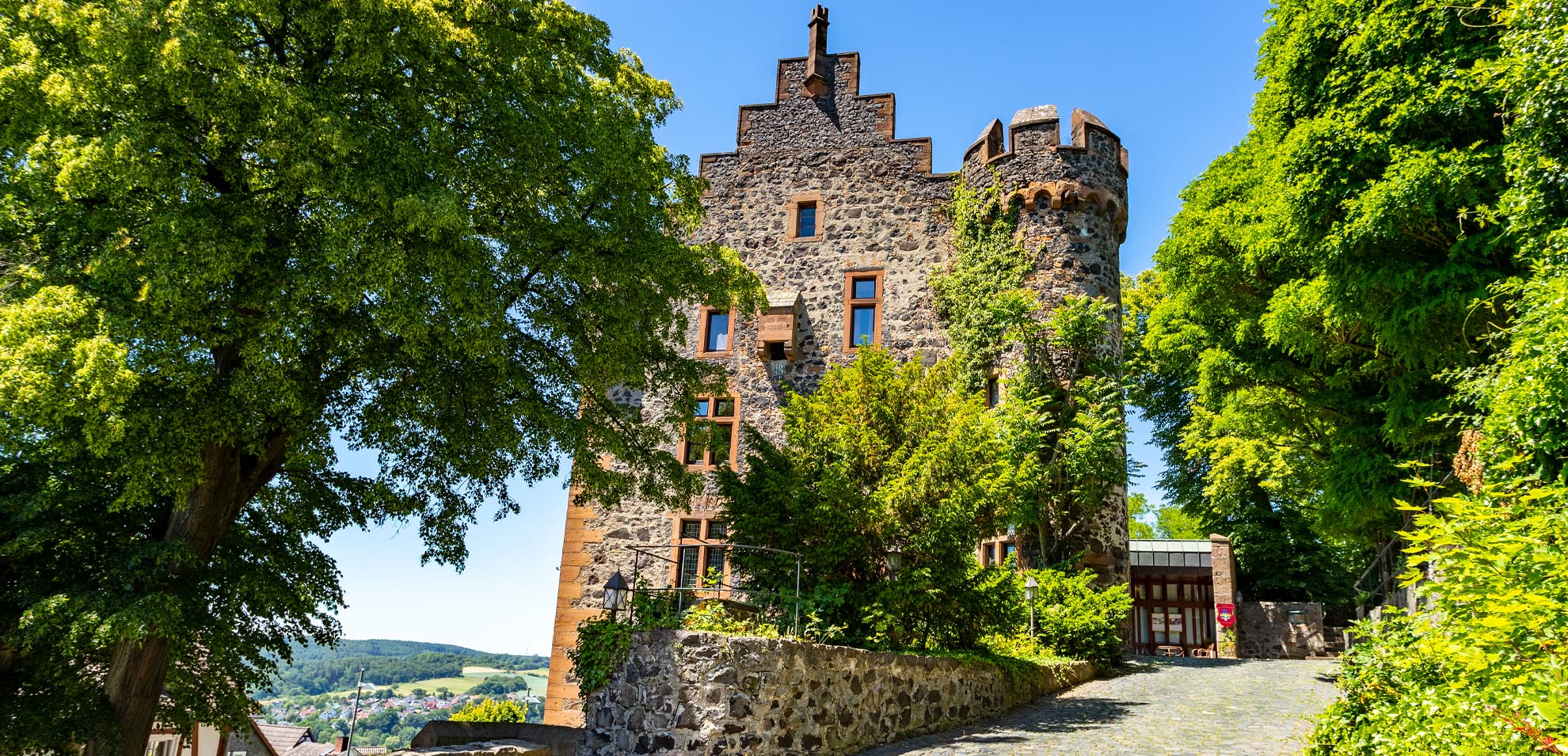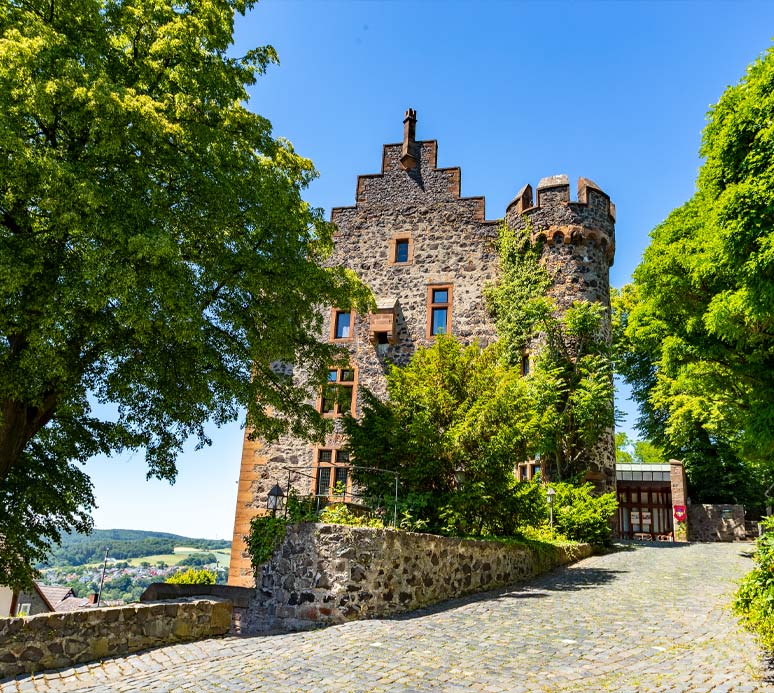

HISTORY OF THE CASTLE
The history of Staufenberg Castle begins with the upper castle, the ruins of which can be visited on foot from the castle hotel. It is assumed that the upper castle was built in the 12th century by Gozmar I von Ziegenhain, who ruled over Staufenberg as high bailiff from 1108. At this time, Staufenberg was an exclave in the middle of the possessions of Landgrave Ludwig I of Thuringia and Hesse. In 1185, Lukardis, the daughter of Count Gozmar III of Ziegenhain, married Frederick, a descendant of Louis I, as a result of which the County of Ziegenhain suffered considerable territorial losses.
In 1229, Sophie, the daughter of Frederick I of Ziegenhain, who was married to Burgrave Burkhart of Magdeburg, inherited parts of the territories, including Staufenberg Castle. Even before the death of Frederick I, Burkhart sold the Ziegenhain estates to Landgrave Louis IV the Holy, another descendant of Louis I, but Countess Sophie tried to prevent this, as it would have meant an uncertain future for the castle. After the death of Louis IV, his brother, Conrad of Thuringia, seized the territorial claims.
The first documented mention of Staufenberg Castle in 1233 was an arbitration between Konrad of Thuringia and the Counts of Ziegenhain. While the Ziegenhainers had to cede some territories, Staufenberg Castle came back into the possession of Counts Gottfried IV and Berthold I of Ziegenhain, with the latter becoming the new lord of the castle. In 1247, an inheritance dispute broke out again over the territories near Staufenberg. Countess Sophie fought for Staufenberg Castle again before her death in the same year and recorded the ownership claims of the Counts of Ziegenhain in a document. In 1296, Emperor Adolf von Nassau besieged Staufenberg due to further disputes over ownership claims. Ultimately, the castle remained in the possession of the Counts of Ziegenhain until they died out in 1450. After that, today’s upper castle and the entire county fell to Hesse.
The Landgraves of Hesse appointed various bailiffs over the years and mortgaged the castle to Burgmannen. From 1507 onwards, Staufenberg Castle was in the pawn possession of the noble von Rolshausen family. Friedrich I von Rolshausen built the late Gothic lower castle in 1517. At this time, Philip the Magnanimous was Landgrave of Hesse. In 1645, the castle survived a siege by Swedish troops before the upper castle was destroyed by the latter on May 27, 1647 at the end of the Thirty Years’ War in the conflict between Hesse-Darmstadt and Hesse-Kassel troops. In 1670, Otto von Rolshausen finally sold the remaining lower castle, which changed hands several times over the following three centuries. During this time, demolition was even considered, which did not happen, but the castle eventually fell into ruin by 1829.
In 1858, the castle ruins were returned to Hessian ownership after being rediscovered by two Hesse-Darmstadt princes during their studies in Giessen. In 1860, two years of restoration work began on the lower castle in the neo-Gothic-Romantic style according to the plans of Hugo von Ritgen. In 1925, the castle went to the Hessian state. After the Second World War, the castle was leased as a hotel and restaurant for over 30 years.
In 2002, the lower castle was finally acquired by the private hotels Dr. Lohbeck and has been privately owned ever since, while the ruins of the upper castle have since been leased to the Staufenberger Heimatvereinigung. After extensive reconstruction and renovation work, the Burghotel reopened its doors to guests on May 1, 2003. Despite modernization, the atmosphere of the traditional past has remained untouched. The combination of historical and new values creates a very special charm that turns every stay into an unforgettable experience within venerable walls.
CONTACT
Privathotels Dr. Lohbeck GmbH & Co.KG
Staufenberg Castle Hotel
Burggasse 10
35460 Staufenberg
Phone: +49 (0) 6406 / 3012
Fax: +49 (0) 6406 / 3014004
E-mail: info@burg-hotel-staufenberg.com
PRIVATE HOTELS DR. LOHBECK
SOCIAL MEDIA

